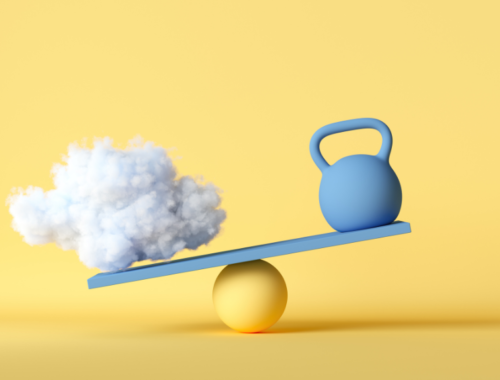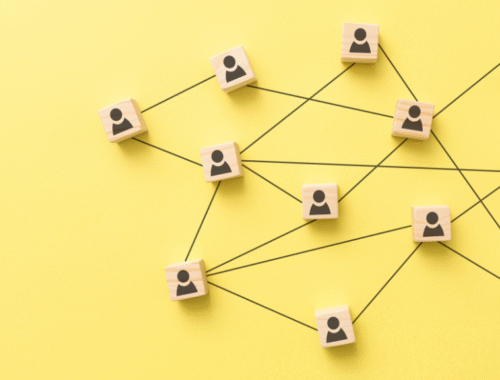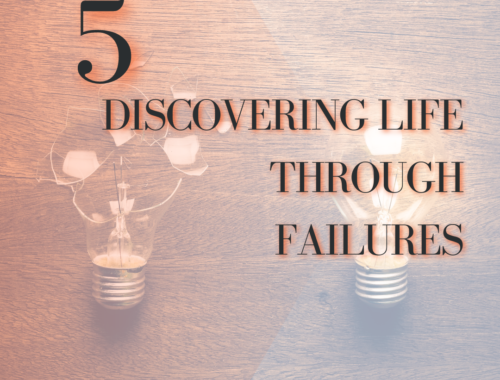
WHY SUCCESSFUL EXECUTIVES FEAR SILENCE? (AND HOW IT SABOTAGES THEM)
Imagine a successful executive, an admired leader, whose routine is a whirlwind of decisions, meetings, and challenges. Despite external recognition, he carries a persistent feeling of emptiness and disconnection from himself. Amid this chaotic agenda, one day he decides—whether out of fear, curiosity, or perhaps a genuine impulse—to sit alone, in silence, just with himself. No distractions, no justifications, just him and his thoughts.
This simple gesture, seemingly trivial, is one of the bravest acts we can perform in an era of constant noise and relentless escapes. David Whyte, a contemporary poet and thinker, captured this boldness: “The greatest act of courage is to sit with yourself and discover who you are.”
But what’s the problem with that? Why, in a world that values doing and the external, have we become so incapable of simply being with ourselves?
The answer lies in a complex network of social, psychological, and neurobiological conditioning that distances us from internal silence. First, we are constantly stimulated to flee discomfort—be it restlessness, fear, or doubt—through external distractions: social media, work, accelerated consumption. Silence confronts us with aspects of ourselves we prefer to avoid.
Moreover, our mind creates narratives, often distorted, that keep us trapped in limiting beliefs and social masks. These narratives serve an adaptive purpose but also reinforce self-deception, protecting us from facing painful truths.
Neurobiologically, the brain is conditioned to avoid states of vulnerability, activating automatic fear and anxiety responses when we try to slow down and look inward. The prefrontal cortex, responsible for reflection and emotional regulation, needs to be strengthened so that we can cope with this internal exposure.
Therefore, sitting with yourself is not just an exercise in introspection but a confrontation with mechanisms that keep us trapped in repetitive and superficial cycles. It is an invitation to dismantle illusions and reprogram patterns that limit our authenticity.
In this essay, we will explore these dynamics—from the neuroscience of consciousness to the depths of existential philosophy—to understand why this journey is so challenging and, at the same time, essential for a full and authentic life.
The Complexity of Self from a Systemic Perspective
“Have you ever stopped to think that the most difficult person to know in your life is yourself?” — Marcello de Souza
It is a contemporary paradox. We dedicate time and energy to decipher the world outside—mastering languages, navigating complex systems, interpreting others. But the most enigmatic and neglected territory remains ourselves.
This happens because the “self” we seek is neither a linear entity nor a pure essence waiting to be revealed. From a systemic perspective, the self is a dynamic constellation, a constantly changing field where brain, culture, language, and affective experiences converge.
Contemporary neuroscience, through thinkers like Karl Pribram, shows us that the mind is not located in a single structure but emerges from the interaction of distributed neural networks. This implies that our sense of identity is plastically constructed—shaped by the relationships we live, the contexts that traverse us, and the symbols that inhabit us.
Self-knowledge, then, ceases to be an exercise of “turning inward” and becomes a process of systemic decoding: unveiling internalized scripts, inherited beliefs, emotional patterns that act as invisible algorithms.
Vygotsky already stated: thought is internalized language. Therefore, our internal dialogue is not neutral—it carries the history of our education, our pains, our silences. To know oneself is, therefore, an exercise in rewriting one’s own existential grammar.
Contrary to the romantic idea of finding a “true self,” the profound journey is to understand that the self is movement—a symbiotic organism between the biological and the social, between the conscious and the unspoken. And only when we recognize the complexity of this web can we begin to inhabit our authenticity.
The Neuroscience of Inner Silence and the Courage to Face Oneself
Being silent is not the same as being absent. On the contrary—it is accessing an internal territory where reason and emotion, instinct and reflection, converge in a delicate dance of (re)construction of the self.
Neuroscientists like Antonio Damasio demonstrate that self-awareness is not a fixed point but a continuous emergence: the result of integration between the limbic system—where emotions reside—and the prefrontal cortex, responsible for metacognition and conscious decision-making. Especially, the dorsolateral prefrontal cortex activates when we confront our fears and anxieties with lucid presence, functioning as a regulatory center for anxiety and impulsivity.
When we choose to sit in silence with ourselves—without distractions, without masks—we activate this neuropsychological architecture that favors not only self-regulation but also deep discernment. And here emerges true courage: not the absence of fear, but the ability to observe our automatisms without fleeing, to face what inhabits us without dissolving.
The fact is that meaning arises from the conscious confrontation with suffering. Not passive suffering, but the one that calls us to authenticity, to recognizing pain as a compass, not a prison.
But what really prevents us from taking this plunge?
The Three Invisible Enemies of Self-Discovery
Despite the legitimate desire for self-knowledge, there are invisible forces—neuropsychological, social, and existential—that silently operate to keep us away from ourselves. Identifying them is the first step toward transcending them.
1. The Tyranny of the “Narrative Self”
Why your personal story is partly a functional fiction
Damasio points out that the human brain operates like a storyteller. We create a continuous autobiographical narrative to maintain the illusion of coherence and identity. However, this narrative is:
• Edited by confirmation biases (we remember what reinforces old beliefs);
• Distant from the truth due to temporal distortions (we value more what happened recently);
• Contaminated by inherited social scripts, which we rarely choose consciously.
Real case: A client, CEO of a food industry company, considered a “born leader” by his team, discovered in our Cognitive Behavioral Development (CBD) process that his authoritarian style was actually a defense mechanism learned to survive an emotionally abusive father. His leadership was not the fruit of essence but of trauma.
2. The Broken Mirror Effect
How Others Define Us More Than We’d Like to Admit
The sociologist Pierre Bourdieu reminds us that our most “natural” habits are actually invisible collective constructions — the so-called habitus. In other words, our way of being is shaped by social and cultural fields that operate like silent algorithms.
Solomon Asch’s conformity research showed that 75% of people deny their own perception to align with the group’s opinion. The risk? We begin to define ourselves less by authenticity and more by adaptation.
3. The Neurobiology of Self-Deception
Why We Lie to Ourselves — and How It Weakens Us
Evolutionary biologist Robert Trivers demonstrated that self-deception is an evolutionary strategy: we lie to ourselves to reduce the internal discomfort of acting against our own values. This minimizes cognitive dissonance, allowing us to keep functioning without emotional collapse.
The side effect? We disconnect from our true motivations, living roles whose origin we do not know and whose consequences we do not control. It is no coincidence that 85% of senior leaders report feeling like ‘impostors’ in moments of solitary silence — and spend 3 times more time in meetings than in self-reflection.
Silencing to Listen
“Man is trapped in the cage of his own mind.” – Marcello de Souza
The executive paradox: The higher your position, the rarer your access to your own truth. This is not just a reflection. The loneliness at the top is not only an organizational metaphor — it is a psychological reality. In the noise of decisions, meetings, deadlines, and constant visibility, it becomes increasingly difficult to access something simple and essential: one’s own inner truth.
Cultivating inner silence is not a contemplative luxury, but a strategic necessity. It is a neural, emotional, and philosophical practice — an internal reboot for leaders who wish not only to perform but to sustain their psychic and emotional integrity amid complexity.
Silencing to listen is not just “being quiet.” It is switching off the narrative autopilot:
• the stories we tell ourselves to protect ourselves,
• the roles we accumulate to be accepted,
• the patterns we repeat to feel safe.
It is listening to the lies we tell ourselves.
And having the courage — and compassion — to dismantle them.
In this space of deep listening, something rare begins to happen:
Authenticity ceases to be a goal to achieve and becomes a state to inhabit.
Not as a fixed ideal, but as a living movement of continuous reinvention.
In other words, it is in this space that authenticity can flourish — not as a fixed ideal, but as an ongoing movement of presence and reinvention.
The Impact of Self-Exploration on Collective Life
Discovering who we are is not an isolated act — it is a movement with systemic effects. Every step toward self-knowledge resonates in our relationships, shapes the cultures we inhabit, and reconfigures how we lead, learn, and collaborate.
Social psychology shows that the self is not formed in a vacuum: it is sculpted through interactions, language, and exchanges. The deeper the encounter with oneself, the more genuine the presence with the other becomes. Self-knowledge is therefore a catalyst for empathy and authenticity — two essential pillars for building healthy human bonds and organizational environments that thrive.
Here lies the unspoken secret: silence is the only place where a leader stops being a ‘boss’ and becomes human. And it is precisely this humanity — fragile, imperfect, authentic — that inspires teams to give their best, not out of obligation, but out of real connection. He or she becomes an agent of genuine transformation — someone who inspires not through control, but through coherence, listening, and cultivated vulnerability.
Recent studies on innovative organizational cultures and agile structures show that psychologically safe environments emerge where there are leaders with reflective depth. These leaders foster a growth mindset, continuous learning, and adaptive capacity in the face of complexity and uncertainty in the contemporary world.
In this sense, the courage to look inward is not only a personal gesture: it is an ethical and strategic engine for collective evolution.
The Encounter with the Authentic Self
“You are not a being — you are a verb disguised as a noun. To stop performing is not to find yourself; it is finally to create yourself.” — Marcello de Souza
Sitting with oneself evokes not only neuroscience or self-knowledge practices but a timeless philosophical call.
Since Socrates — who warned that “the unexamined life is not worth living” — we have been urged to self-inquiry as a portal to inner freedom. For Nietzsche, the journey of individuation demands the courage to tear off masks, dissolve social expectations, and face the abyss of what we have yet to become. A painful process, yes — but deeply liberating.
Philosopher Charles Taylor offers us a contemporary key: the “morality of the authentic.” For him, life only has real meaning when there is coherence between what we feel, think, and do in the world. And that coherence does not arise from a pure essence, but from accepting the complexity of our being — our contradictions, wounds, potentialities, and reinventions.
Creating yourself, therefore, is more than seeking an ideal version of yourself: it is inhabiting the process. A process that does not exhaust itself but deepens the more we open to silence, presence, and listening to what pulses behind performance.
The Path of Radical Authenticity
We’ve reached the point where knowledge must become experience.
The crossing from performance to authenticity demands more than good intentions:
it requires practices that disarm crystallized patterns and make room for new configurations of the self.
Here are three powerful tools, grounded in neuroscience, cognitive psychology, and existential philosophy, for those who wish to begin — or deepen — the journey of reconnecting with themselves:
Technique 1: The Archaeological Dismantling
“To know yourself is to carefully dig through layers of a narrative that may not even be yours.”
• Step 1: List 5 core beliefs about “who you are” (e.g., “I’m a perfectionist,” “I’m reserved,” “I’m too rational”).
• Step 2: Ask: “What is the personal, social, or emotional cost if I let go of this belief?”
Case Study: This reminds me of a client — a senior executive — who saw herself as an “unshakable perfectionist.” During a Cognitive Behavioral Development (CBD) process, she realized her rigidity was not a pursuit of excellence, but a fear of invalidation — an emotional armor inherited from a family environment where mistakes were punished by the withdrawal of affection.
This type of investigation gives the subject the power to reframe unconscious patterns and open up to more fluid and authentic versions of themselves.
Technique 2: The Practice of Creative Emptiness
“To discover who we are, we must first stop performing who they expect us to be.” — Marcello de Souza
• Exercise: Dedicate 20 minutes a day to simply not perform — no tasks, no goals, no social roles. Just be.
• Neurological Objective: Activating the Default Mode Network — the brain network associated with self-perception and identity construction — allows it to operate outside social autopilots, promoting deep reorganizations of self-image.
This creative emptiness is, paradoxically, the fertile space where the new Self can emerge — not as a superficial invention, but as a genuine expression of inner freedom.
Technique 3: The Internal Socratic Dialogue
“A mind that doesn’t inquire turns fiction into foundation.” — Marcello de Souza
Whenever a thought arises such as “this is just who I am,” challenge it with these questions:
1. What concrete evidence do I have for this?
2. Who benefits from me believing this?
3. What opposite version could also be true?
This method disarms the automatic nature of self-affirmations and invites reinvention. After all, between stimulus and response, there is a space — and in that space lies our freedom.
The Silent Revolution of Authenticity
“True courage is not about conquering the external world, but facing the invisible storms that inhabit our soul.” — Marcello de Souza
Sitting with yourself is not a contemplative luxury — it is a radical act of freedom.
It is in this internal, silent, disarmed space that the seeds of personal reinvention and collective impact are planted.
Neuroscience confirms what philosophy has long intuited:
Those who practice conscious identity reinvention reap tangible results:
• +37% resilience in times of crisis
• 2x greater capacity for continuous learning
• Up to 29% reduction in cortisol levels
But perhaps the most powerful data is not in the statistics — it’s in this essential reminder:
“The longest journey is not the one that crosses continents, but the one that takes you from self-deception to authenticity. And that — only you can make.” — Marcello de Souza
And You?
✓ How many times have you run from silence out of fear of what you might find?
✓ How does your relationship with yourself impact the choices you make, the bonds you build, the influence you exert?
✓ What kind of transformation would be possible if, today, you decided to take the first step on that crossing?
An Invitation to the Silence That Transforms
“The greatest journey in your career won’t be to a new market — it will be into yourself. Safe travels.” — Marcello de Souza
We’ve reached the point where words are no longer enough — silence is needed.
A silence that doesn’t repress, but reveals.
Where there are no masks, no performance — only presence.
If you’ve made it this far, something inside you has already begun to shift.
• Perhaps discomfort.
• Perhaps an echo.
• Perhaps, for the first time in a long time, a subtle longing to return home — to yourself.
Now, an invitation: pause. Breathe. Listen.
Not to the world.
But to that voice you’ve learned to ignore.
It’s not your enemy — it’s your compass.
Dialogue with Your Truth
• What belief about “who you are” are you ready to question today?
• What “social mask” no longer fits — and are you willing to let it go?
Share in the comments.
Not to be seen,
But to finally see yourself.
The Intrinsic Journey to Discover Who We Are
“Perhaps what we call destiny is not something that awaits us in the future,
but something that is born when we dare to become who we truly are.” — Marcello de Souza
Challenge of the Day:
Choose ONE mask you wore this week (e.g., “the decisive one,” “the calm one”) and write below: what was its emotional cost for you?
I’ll start: My mask was “the expert” — and it kept me from learning something new.
#marcellodesouza #marcellodesouzaoficial #coachingevoce #selfawareness #neuroscience #psychology #emotionalintelligence #mentalhealth #executivepresence #existentialphilosophy #behavioralneuroscience
Você pode gostar

THE PARADOX OF SUCCESS: WHY ORGANIZATIONS FAIL TO LEARN – PART 2
22 de julho de 2024
THE ART OF DELEGATING: TRANSFORMING LEADERSHIP INTO SUSTAINABLE IMPACT
4 de setembro de 2025
